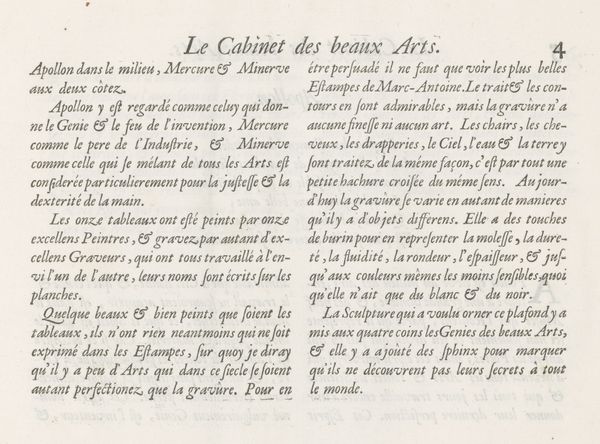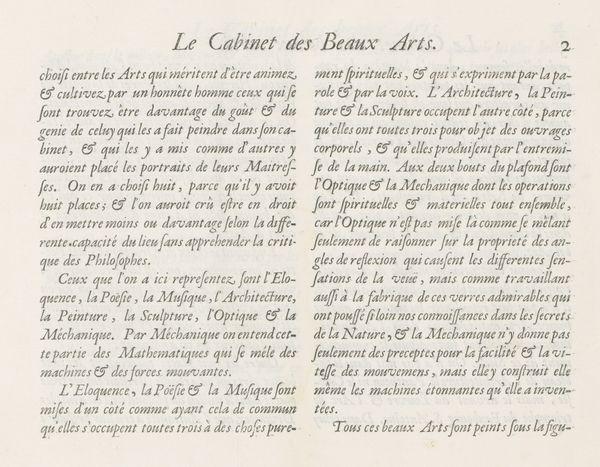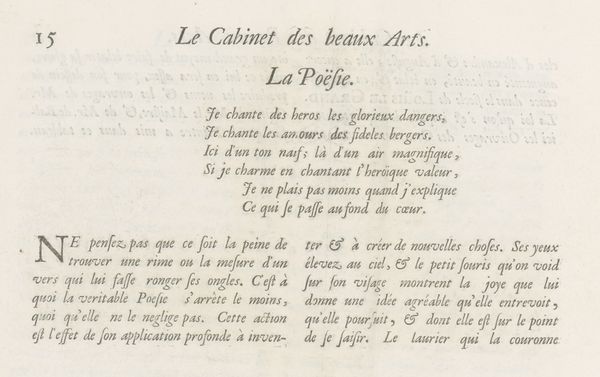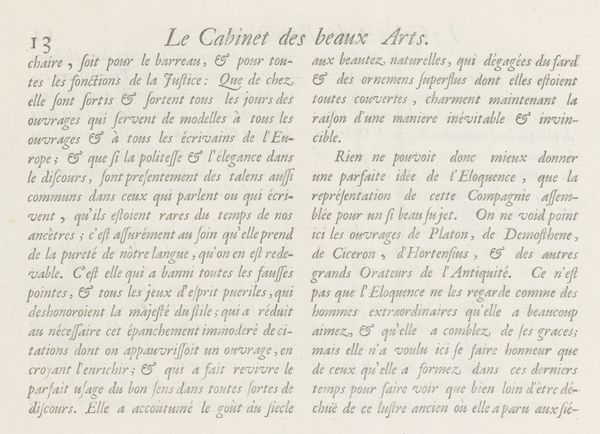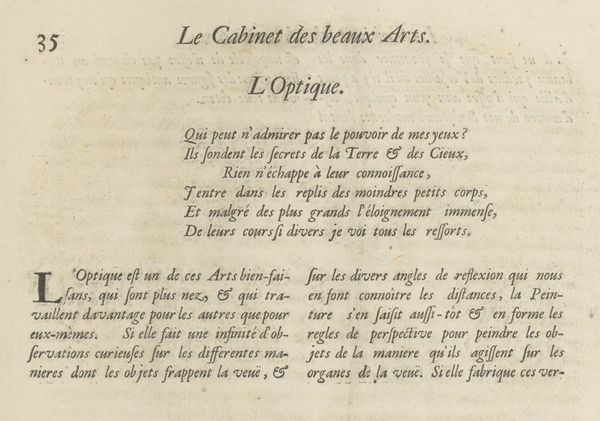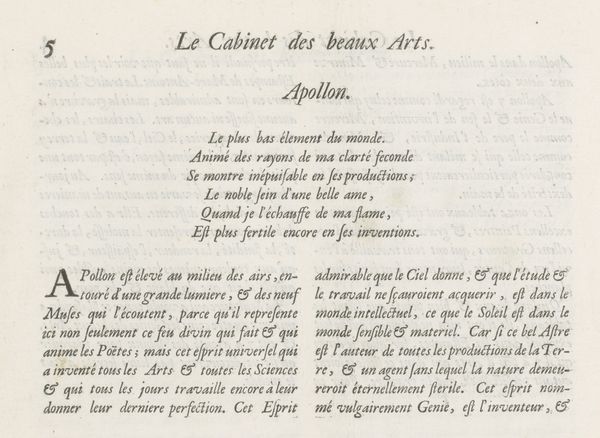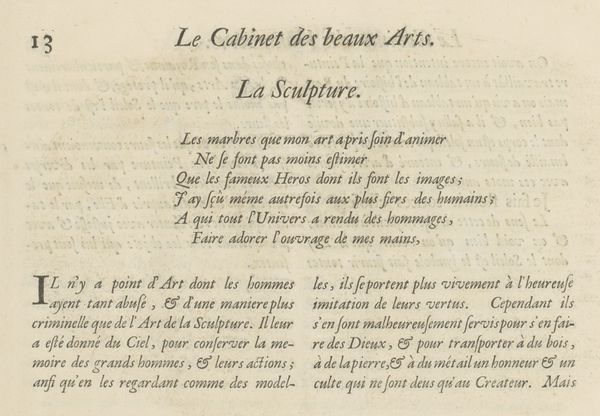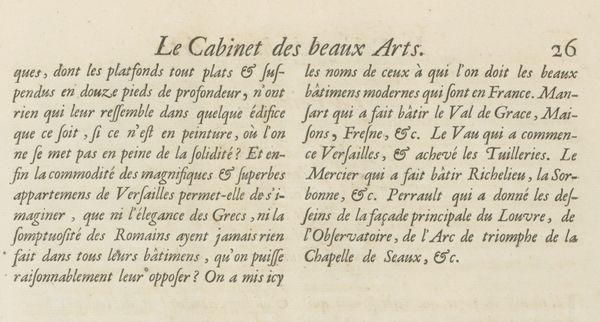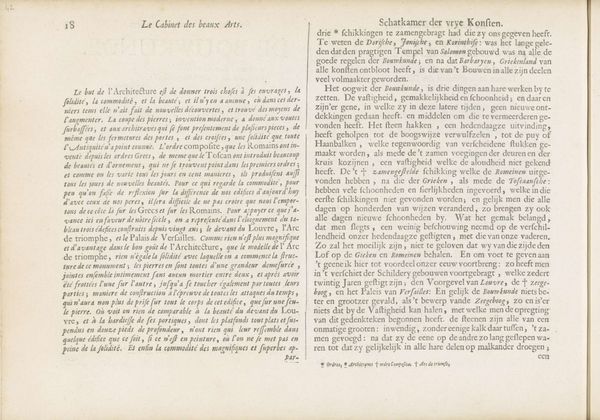
graphic-art, print, etching, typography, engraving
#
graphic-art
#
script typography
#
hand-lettering
# print
#
etching
#
hand drawn type
#
hand lettering
#
typography
#
hand-drawn typeface
#
fading type
#
stylized text
#
thick font
#
handwritten font
#
engraving
#
small lettering
Dimensions: height 281 mm, width 380 mm
Copyright: Rijks Museum: Open Domain
This text sheet by Charles Perrault presents an explanation of fine arts, or liberal arts. Notice the recurring motif of division, primarily between the liberal and mechanical arts, a concept that echoes through centuries of philosophical discourse. This division isn't new; we see it in ancient Greece, where intellectual pursuits were deemed superior to manual labor. Consider how Plato, in "The Republic," emphasizes the philosopher-king, a leader guided by reason rather than practical skill. This hierarchy of knowledge reflects a societal preference for abstract thought over physical creation. Over time, this division has morphed, sometimes blurring, sometimes sharpening. The rise of the Renaissance saw artists like Leonardo da Vinci excelling in both art and science, challenging the strict boundaries. Yet, the underlying tension remains, a subconscious struggle between the ideal and the real, the mind and the hand. This text from Perrault is only another point in this cyclical progression, continually resurfacing and evolving across historical contexts.
Comments
No comments
Be the first to comment and join the conversation on the ultimate creative platform.
